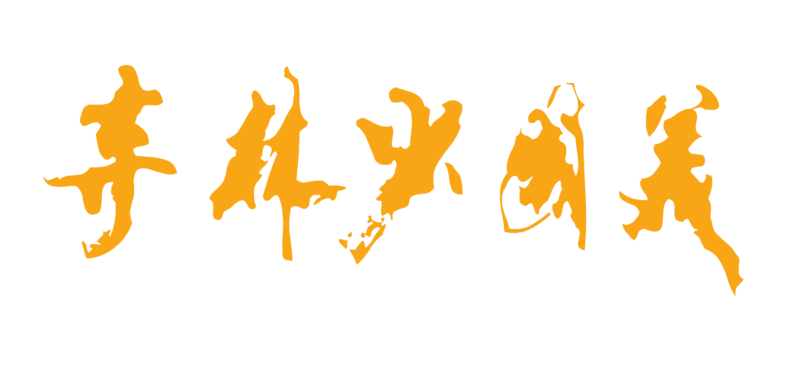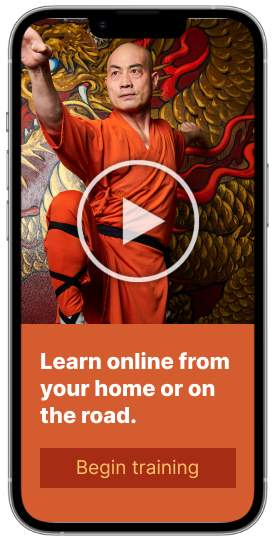THE POWER OF THE PUNCH! – Black Belt Magazine
February 1, 2001
Black Belt Magazine
Martial artists often walk into the USA Shaolin Temple in New York City hoping to learn secret fighting techniques. They imagine that the Shaolin monks have practiced mysterious methods of combat for centuries, and they want to learn thosekeys to instant victory. I usually tell them that they’ve watched too many movies. The true secret to becoming a better martial artist is expressed in the USA Shaolin Temple mantra: “More Chi! Train Harder!” That’s the way the Chinese monks have trained for centuries, and it’s the way you should train today.
Throughout history, the greatest fighters – be they martial artists, boxers, sumo wrestlers or kung fu practitioners – have risen to the top because of their hard work, courage, focus and discipline. That recipe for success can be applied to every other part of life as well. This article will discuss methods for mastering the techniques, but you must keep in mind that no matter how complete your technical knowledge is, the real secret of Shaolin fighting lies in the effort you put into your practice sessions.
Foundation
Chinese martial artists have a saying: “The top is the basics; the basics are the top.” To get to the top, the best place to start is at the bottom. Starting at the bottom means daily doses of punches, as well as stance and movement training to develop your speed, power and strength.
Kung fu punch demonstration Kung fu punch demonstration
Kung fu punch demonstration
Strength is inextricably linked to flexibility. It does not have to come from lifting weights, which tends to develop your short muscles; rather, it can come from practicing basics, which tends to develop the long muscles. Flexibility allows a kick to be higher and quicker and a punch to go longer and faster. Flexibility cannot be stressed enough.
In China, I spent much of my life stretching every part of my body as if it were one muscle. For instance, my teachers taught that from the base of your heel to the top of your head, the muscles are connected and should be treated as a single structure.
Consider the typical hamstring stretch: Most people sit on the floor and bend at the middle of their back, and they are satisfied with just touching their toes. Students of Shaolin Kung Fu are told to stretch the length of the body and strive to “kiss” their toes. And they do the same stretch while standing.
Power
The Chinese martial arts teach four levels of power: tui li (pushing power), baofa li (explosive power), qun li (inch power) and tou li (penetrating power).
Pushing power is the simplest. Children learn how to use it on the playground. To push someone away takes no skill; a true martial arts master would probably never use this power in a fight unless he was trying to avoid hurting his opponent.
Explosive power is stronger and for the most part self-explanatory.
Inch power is much more advanced. With it, you can explode your power with only one inch between your fist and the target. You need not draw your hand back before striking.
Penetrating power is the rarest because it is the hardest to develop. With your hand touching your opponent you can use your energy to penetrate his body. After the strike, the front surface of the body will look untouched, but his internal organs will be destroyed and a bruise will appear on the opposite side.
Before exploring ways to use these levels of power in your punches, it is useful to rectify a few incorrect beliefs:
Some martial artists think that the punching power is best gained through striking a heavy bag. Remember that you can show a heavy bag power, but it cannot show you a thing. Heavy bags do have their place, of course. The best method for using one is to start with a lightweight model and graduate to a heavier model as you learn how to project power through your fist.
Others believe that the harder they tense their arms during a strike, the more power they produce. Be forewarned that you can seriously injure yourself with this kind of practice because stress is a negative force. The more relaxed your mind and body are, the better. You must stay relaxed all the way through the punch, and that takes mental and physical discipline.
Kung fu punch demonstrationKung fu punch demonstration Kung fu punch demonstrationKung fu punch demonstration final
The human body consists of three major parts: the head, the torso and the legs. All three components must work in concert to generate maximum power.
In the Chinese arts, there are three external harmonies (the hands with the feet, the shoulders with the hips, and the elbows with the knees) and three internal harmonies (the heart with the mind, the mind with the chi, and the chi with the power). Do not fall into the trap of thinking there is a difference between the internal and external for they are always one. No part of the body can move by itself. Thus you cannot execute an external movement without some form of internal instruction. For that reason, you need internal and external coordination to effect a superior punch.
The best way to pack the most power into your punch is to use a corkscrew-like turn that progresses in a specified order: First the foot moves, then the knee, the hip and the waist, the shoulder, the elbow and finally the fist.
One of the most crucial elements of this is the pivoting of the foot: The heel comes up naturally and the weight remains on the ball. When you activate these elements in harmony, you maximize your power.
You must also focus your eyes on the target of your punch. Never turn your head away from your opponent.






